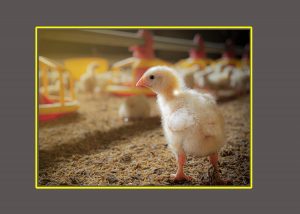
Corona virus belongs to coronaviridae single stranded, positive-sense RNA virus, size of which is about 120 nanometer in diameter. There are about 40 different strains of corona which infect both human and animal. The virus that cause Corona virus disease (COVID-19) is thought to have originate in bats and then spread to snakes and pangolins and to human also via meat contamination.
Hantavirus belongs to Family of hantaviridae, Genus orthohantavirus and Order bunyavirales. Hantavirus had 10% mortality rate. It was named after the Hunter river in South Korea discovered by Ho Wang Lee, a South Korean virologist and his colleagues. As of 2017, 41 species of Hantavirus were identified. The virus can circulate asymptomatically in rodent, insectivores and Bats but sometimes cause illness in human. Hanta virus infection is commonly found in Asia, Europe and South America but less common in North America.
More about their Discoveries
Corona virus was first discovered in mid 1960s, causing diseases in animals and humans. Since 2003 at least 5 new human coronavirus have been indentified. Severe Acute Respiratory Syndrome (SARS) caused by Novel Coronavirus (SCOV) is recently emerged human disease associated with pneumonia. The disease was first recognized in Guangdong Province, China in November 2002. Middle East Respiratory Syndrome coronavirus was discovered in 2012. Recently, a new strain of coronavirus is identified in December 2019 as 2019 novel corona virus disease (COVID-19). The strain of the virus was first discovered by a Chinese ophthalmologist in Wuhan Central hospital, Dr Li Wen Liang and died by the same viral infection on 7th of February 2020 at the age of 33.
Hantavirus was first recognized when outbreak of Hemorrhagic Fever among American and Korean soldiers occurred during Korean War (1950- 1953). In November 1993, specific strain of Hantavirus was identified in mice.
Sign and symptoms
Symptoms for Coronavirus may appear 2-14 days after exposure. Initial symptoms may include fever and shortness of breath. The alarming/emergency signs consist of trouble in breathing, persistent pain, constant pressure in the chest, bluish lips or face. Other signs include like fatigue, sputum production, sore throat, headache, nausea, vomiting and Diarrhea.
The incubation period of Hantavirus Pulmonary Syndrome (HPS) is unknown but in most cases symptoms develop in 1 to 8 weeks after exposure. Sign and symptom of HPS is same like coronavirus. Fever, dry cough, body aches, headaches, diarrhea and abdominal pain.
Mode of Transmission
It is thought that coronavirus can be transmitted from animal to human but detail of which is still not clear. The outbreak of COVID-19 is similar to any other outbreak in past such as Sever Acute Respiratory syndrome (SARS) and Middle East Respiratory syndrome (MERS) in which corona virus migrate into human population from its animal reservoir
Like Coronavirus, Hantavirus is also not an airborne infection. It can only be spread if one comes in direct contact with infected rodent, its feces urine or saliva.
How to diagnose
The saliva and sputum can be collected from both upper and lower respiratory tract and can be assessed for RNA using polymerase chain reaction (PCR) test.
Hantavirus can be diagnosed serologically. The antibody titer can usually be detected by the time clinical signs are developed. ELISA, PCR, Immunochromatographic test and immunofluorescent antibody test are the most commonly used.
Treatment Modalities
No specific treatment but preventive measures and supportive therapy can save the life. In China, Dr Liu Bende stated that transfer of plasma from recovered patient to infected patients can be an effective strategy. He explained that recovered patient develops antibodies against virus which neutralizes the virus.
The recommended dose for plasma is 200-300ml. Another strategy that Chinese healthcare professionals used was control against COVID-19 by using drug like faripiravir or avigan. The doctors recovered 340 patient by the usage of this drug and health professionals from USA recommended Choloroquine Phosphate, a malaria drug against COVID-19.
Prevention of Corona virus includes cleaning hands often avoid close contact with people and should wear a mask if sick. Hence practice social distancing as much as possible.
No specific treatment has been found for Hantavirus. The mainstream supportive therapy is Ribavirin. This has been found as helpful in some cases especially in animals, though the responses in humans were disappointing.
As per the instructions laid out by CDC (Centers for Disease Control) the infection of Hantavirus can be prevented by eliminating or minimizing contact with rodents in home or anywhere sealing any holes or gaps in homes and garages.
Both Corona and Hantavirus are single stranded RNA virus. Coronavirus can be transferred easily among the humans. The result of which is the global crisis that world is facing right now.
-By Dr Atif Ali and Dr M Mehrban, Shaheed Benazir Bhutto University of Veterinary and Animal Sciences, Skarand (SBBUVAS)







